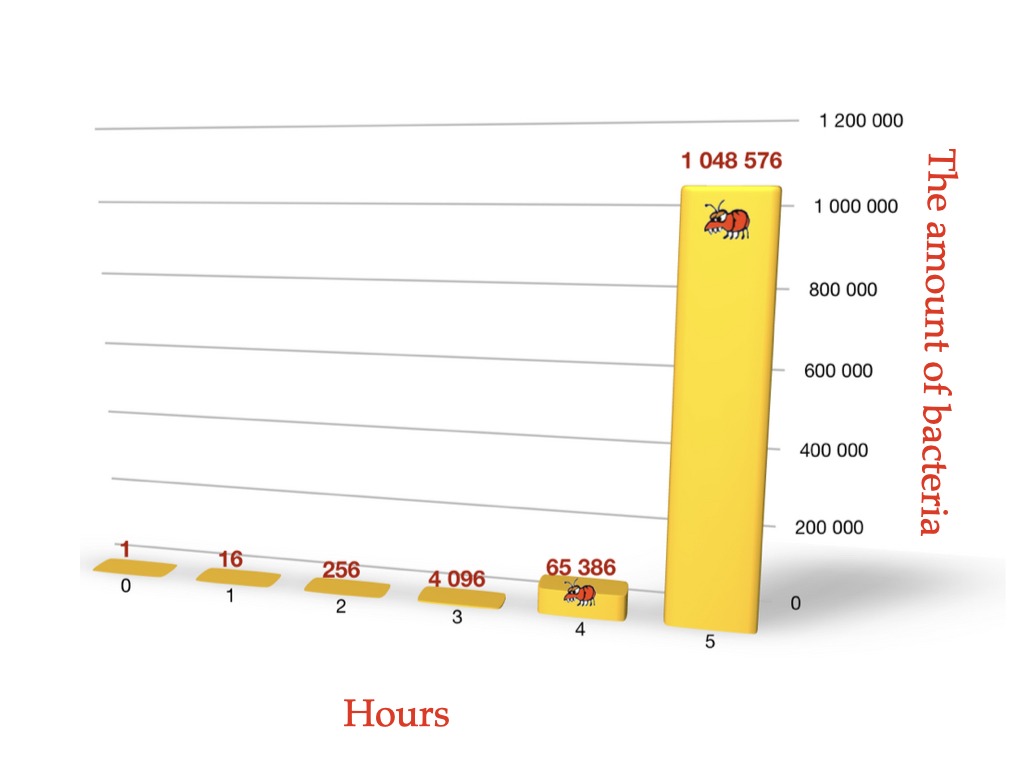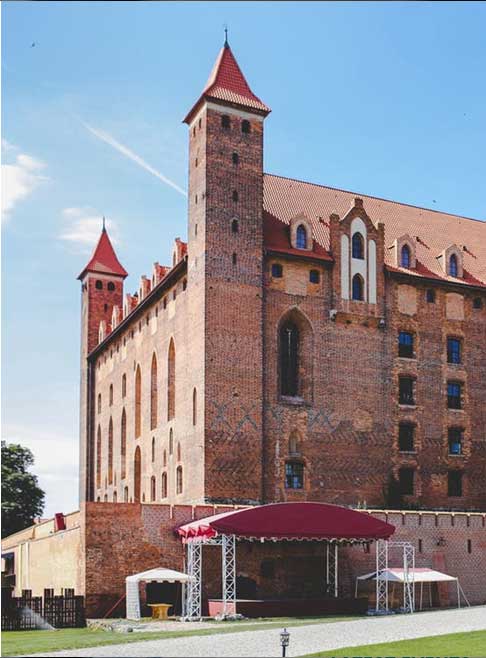2.1. Microorganisms. 4:49
Micro-organisms, multiplication of micro-organisms.
Micro-organisms (Greek, micro – small).
These are invisible to the eye, only visible through the microscope, usually single-footed organisms. E.g. bacteria, fungi, microscopic protozoa.
Micro-organisms are tiny living particles that we cannot smell, taste or see. As a result, micro-organisms can enter food without us knowing it.
Microorganisms are common in almost all environments: air, water, soil, plants, and animals. On average, 40 thousand to 4.5 million micro-organisms live on human hands.
Some micro-organisms are essential in various biochemical processes and are used in cheese, beer, vinegar, yoghurt and bread production. Some of them are pathogens and cause a variety of diseases or are the leading cause of poisoning.
Bacteria are single-celled organisms whose cells don’t have nuclei. They multiply in half.
The bacteria are best replicated in an environment with a favourable temperature and sufficient food.
Bacteria often cause serious and even life-threatening illnesses
Most of the time, harmful bacteria enter the body through dirty hands, poorly treated food, and if hygiene norms and requirements have not been met during cooking.
Factors affecting bacterial growth
Conditions for bacterial growth and reproduction:
- Food
- Proper temperature
- Humidity
- Time
- Oxygen
How does food affect the growth of bacteria?
- The bacterium’s growth requires food. Salt and preservatives create na adverse environment for bacteria to grow and inhibit their reproduction.
- Many pathogenic bacteria prefer protein-rich food, so such food is always at higher risk.
How does humidity affect the growth of bacteria?
- In order for the bacterium to multiply, it needs not only food but also sufficient amounts of water.
- For example, the inside of the pie or the centre of the chicken thigh has sufficient moisture.
The humidity must be in the right shape to allow the bacteria to grow and reproduce.
- For example, salty water, like meat or fish brine, is not suitable for bacteria and inhibits
- For example, raw but salted meat is also na unsuitable medium for bacteria to multiply
- For example, raw but salted meat is also an unsuitable environment for bacteria to multiply.
- For example, raw uncooked chickens are ideal conditions for bacterial reproduction.
- High-risk products:
- Heat-treated meat or chicken,
- Heat-treated fish or marine products,
- Boiled, low-boiled or raw eggs or dishes with them,
- Boiled rice,
- Salad,
- Dairy products
- Low-risk products:
- Cookies,
- Bread,
- Crisps,
- Salted nuts,
- Pickled vegetables,
- Dry food,
- Alcoholic beverages
How does oxygen affect the growth of bacteria?
- Most bacteria need oxygen to grow and multiply, so they need to have contact with the air.
- However, there are bacteria that do not require oxygen and can grow in a vacuum.(For example, Clostridium botulinum is commonly found in canned, vacuum-packed meat or fish)
How does temperature affect the growth of bacteria?
A certain temperature is required for bacteria to multiply
Pathogenic bacteria cannot reproduce or reproduce significantly at temperatures below 5 °C, but do not die and reproduce under favourable conditions.
At 37 °C, pathogenic bacteria grow the best
Bacterial reproduction decreases by about 63 °C
75 °C is the critical temperature for bacterial survival
When food is heated to a temperature of 82°C, disinfection occurs and all bacteria are killed.
110 °C-132 °C — Conservation and sterilisation of food takes place.
Sterilization by UHT treatment (ultra high temperature) is effective in killing bacteria without altering nutritional properties and taste.
Temperatures between 5 and 63 °C are the most suitable for bacteria to live and reproduce.
How does time affect the growth of bacteria?
- In order for bacteria to grow and reproduce, not only the factors listed above, but also the timing, are essential.
- Fair food, humidity, temperature and time are key factors in determining the rate of growth of the bacterium.
- The number of plasters doubles every 10 to 20 minutes under conditions.











